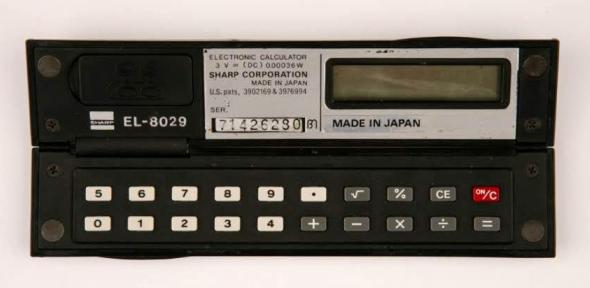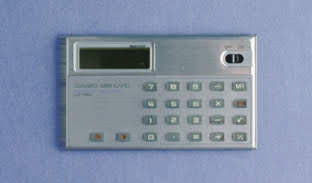One of the most important pocket calculator manufacturers, the UK brand Sinclair, always paid special attention to the design of its devices. Their first model, the 'Executive', was marketed in 1972 as the world's first 'slimline' pocket calculator. With a minimal colour scheme and small buttons designed to feel more solid, the device won a Design Council Award and was sold in the millions and exported around the globe.
In 1976, Sinclair launched the 'Sovereign' calculator in an attempt to create a market for 'upscale' calculators during a time when lower chip prices were leading the market toward decreasing profits. They sold the Sovereign as a luxury tool resembling a remote control, as can be seen in representative advertisements (Image 1). Though not successful on the market, Sinclair anticipated a design-centric approach to computing devices that would subsequently be emphasised by companies like Apple.




